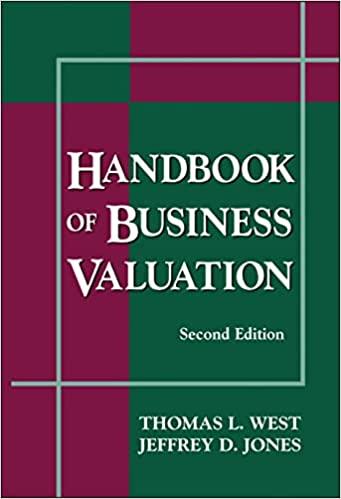Question
Minicase 2: Quaker Oats-Snapple On November 2, 1994, Quaker Oats announced it had agreed to acquire Snapple Beverage Corp. for $1.7 billion. Quaker Oats believed
Minicase 2: Quaker Oats-Snapple
On November 2, 1994, Quaker Oats announced it had agreed to acquire Snapple Beverage Corp. for $1.7 billion. Quaker Oats believed it could build Snapple into a vibrant, growing brand, just as it had done with Gatorade. It believed that synergies could be exploited by integrating the Snapple operation into its Gatorade organization. Just two years and five months later, Quaker agreed to sell Snapple for $300 million, taking a $1.4 billion charge on the loss.
Quaker had planned to streamline distribution in order to exploit cross-selling opportunities between Snapple and Gatorade- in fact, reconfiguring distribution had been a basic tenet of the postmerger plan. Snapple had employed a distribution scheme that relied on more than 300 independent distributors to service supermarkets, restaurants, gas stations, and other convenience chains and mom-and-pop markets within their respective territories (to which they had exclusive rights). Gatorade, in contrast, distributed its product directly from its bottling plants to the warehouses of supermarket chains. The postmerger plan aimed to swap distribution rights. Quaker would grant Snapples independent distributors rights to deliver Gatorade to the convenience chains and mom-and-pop stores. In exchange, Quaker wanted the distributors to hand over their supermarket accounts and let Quaker sell Snapple directly to the supermarkets.
A journalist wrote, The uproar was immediate. The plan gave Quaker the benefit of an already established Snapple supermarket business in exchange for a small store Gatorade trade that had yet to be built. Further, the independent distributors were making $4-per-case margins on Snapple-double what they would have been able to make on Gatorade. Quaker was forced to shelve its plans to streamline distribution, a linchpin of its merger program. Forbes magazine wrote Only after it bought Snapple did it [Quaker] fully realize that Snapples distribution system is completely different from Gatorades.
Other problems appeared after the merger. For one, it was discovered that much of Snapples growth before the acquisition had come from cramming its distribution pipeline full of inventory. In addition, Quaker ran into problems with Snapples manufacturing systems. Snapple had employed a production scheme whereby it out-sourced bottling operations to independent contractors. This procedure not only slowed production, but also locked Snapple into contracts that required minimum bottling quotas even when sales slowed. Quaker had to take a $30 million charge to buy out these bottling contracts. In addition, Quaker encountered stock-out problems at Snapple, where it took weeks rather than days to fill orders.
Finally, there was the problem of slowing sales, signs of which emerged before the definitive agreement had been signed. Late in the merger discussions, Snapple revealed to Quaker that sales and profits for the year had plummeted, Snapples owners insisted on an allcash deal despite the stock-and-cash plan originally put forward. Despite this, Quaker agreed to buy Snapple for $1.7 billion in cash.
Do you think that faulty due diligence was a cause of merger failure in this case?
Explain.
Step by Step Solution
There are 3 Steps involved in it
Step: 1

Get Instant Access to Expert-Tailored Solutions
See step-by-step solutions with expert insights and AI powered tools for academic success
Step: 2

Step: 3

Ace Your Homework with AI
Get the answers you need in no time with our AI-driven, step-by-step assistance
Get Started


